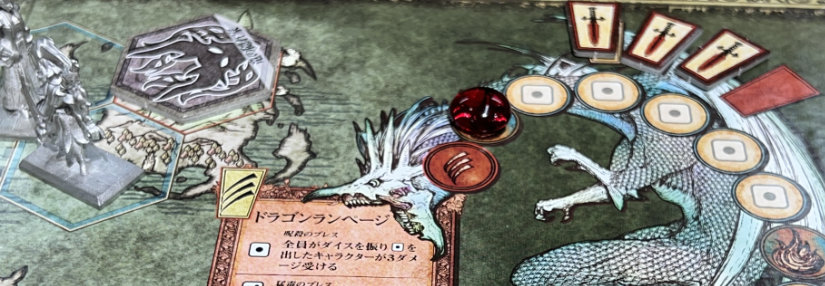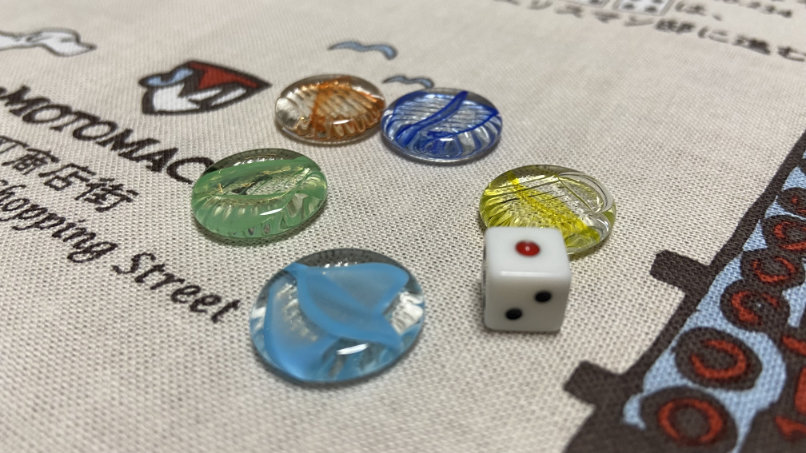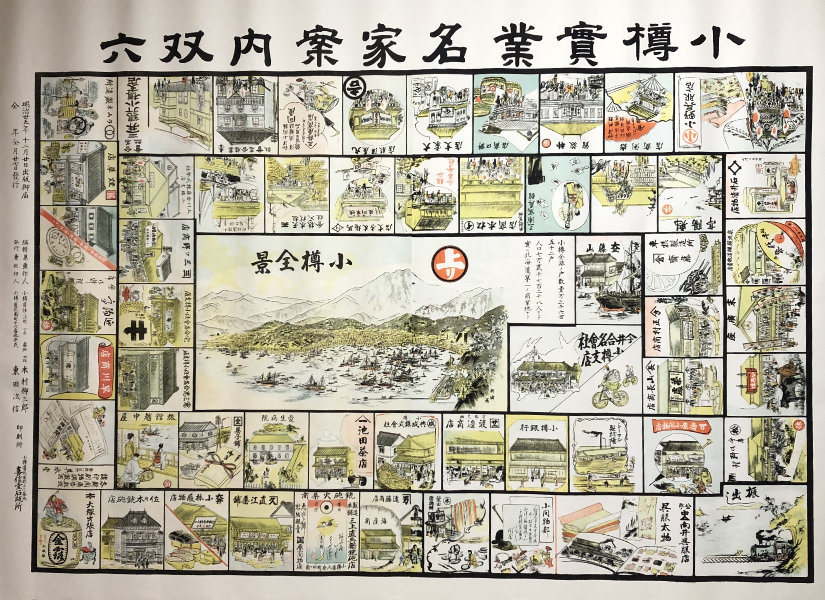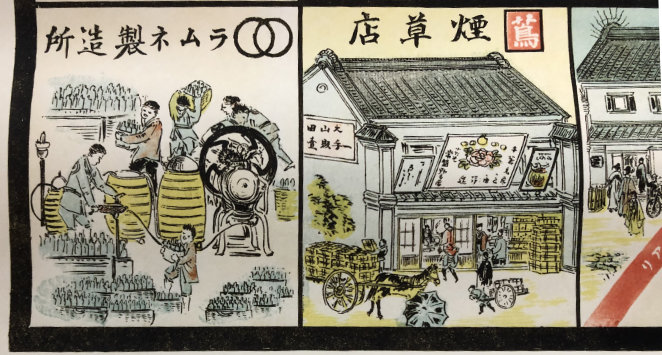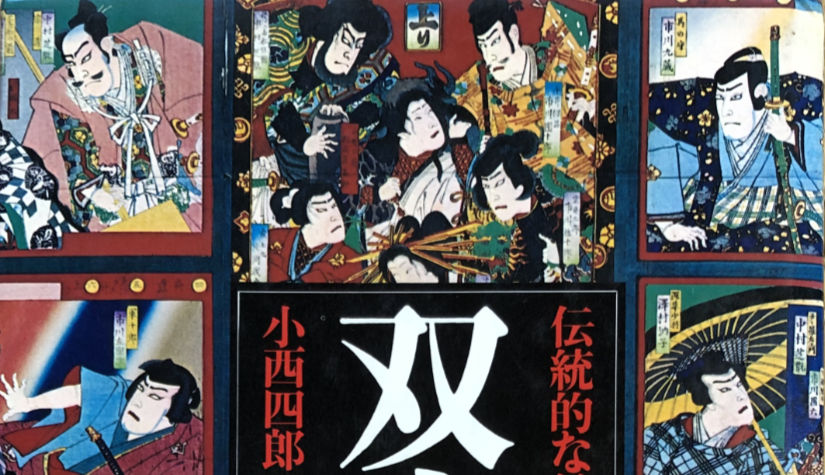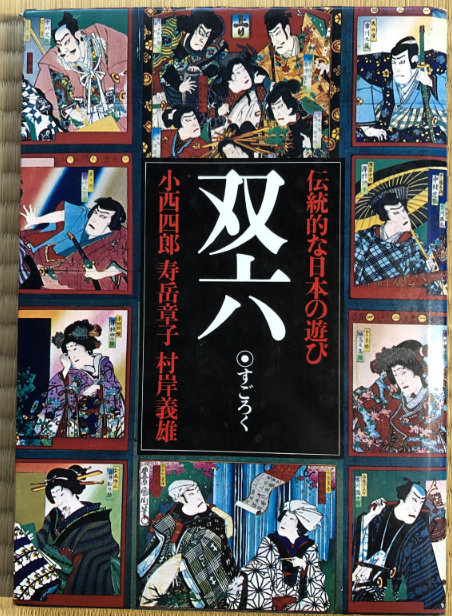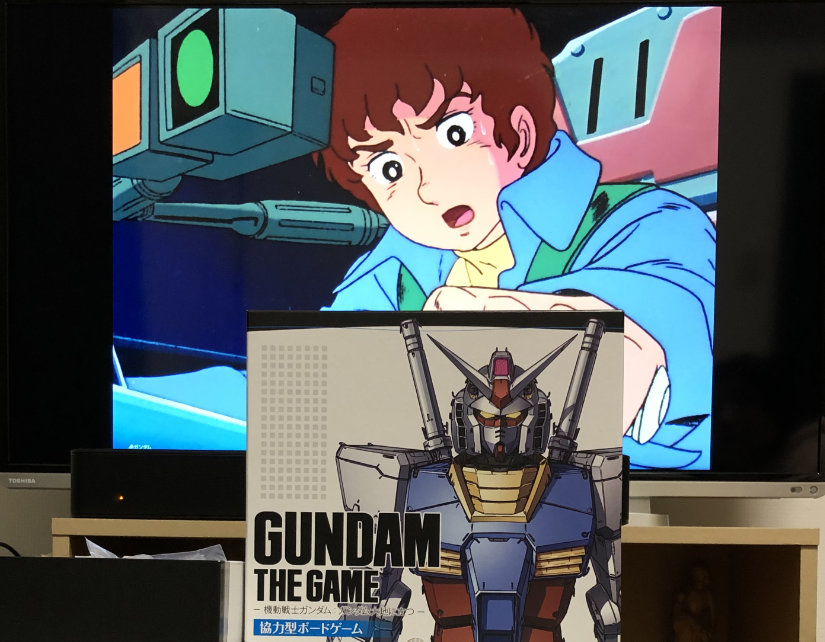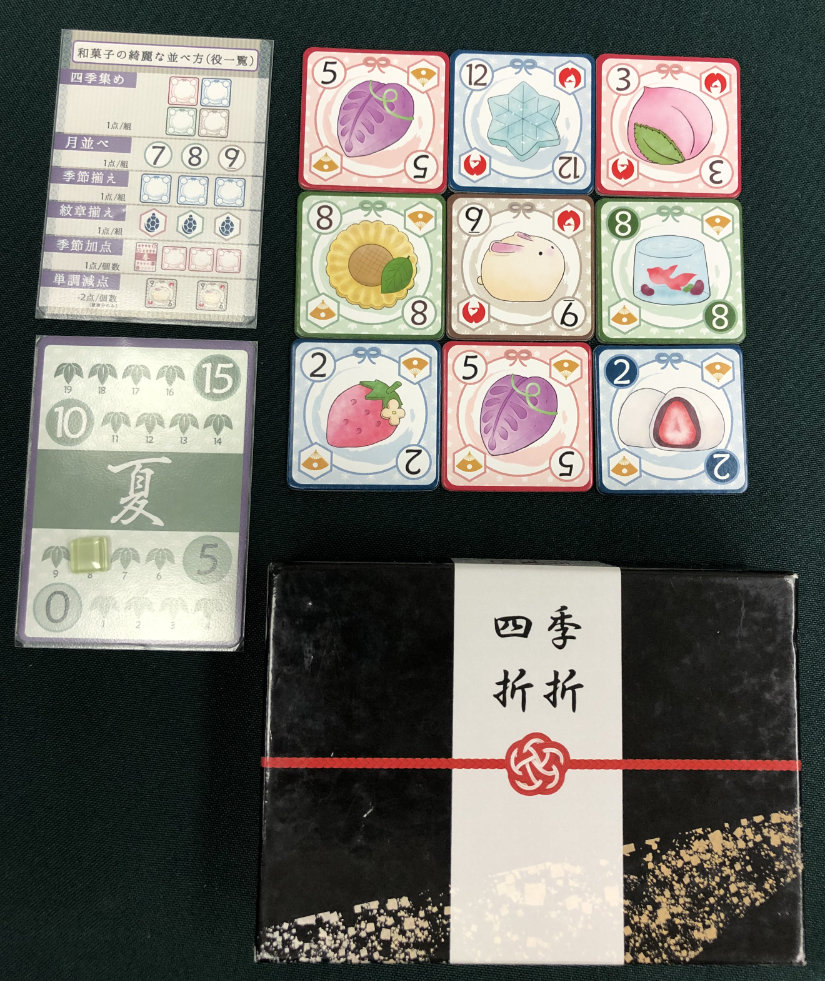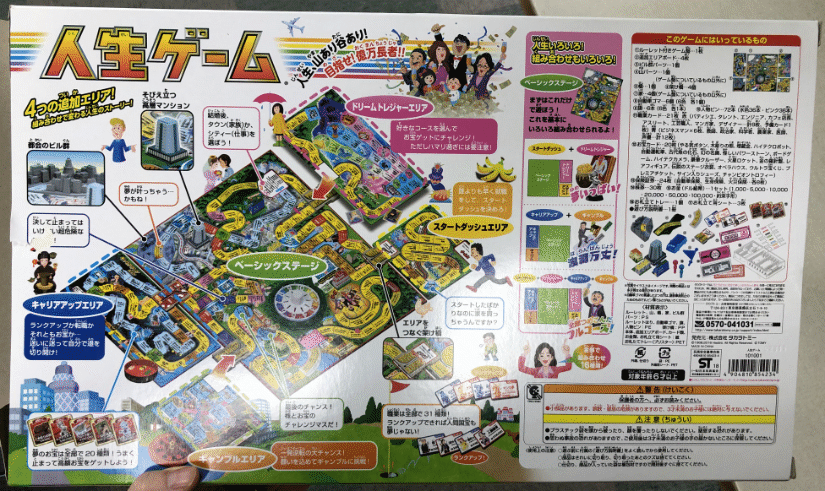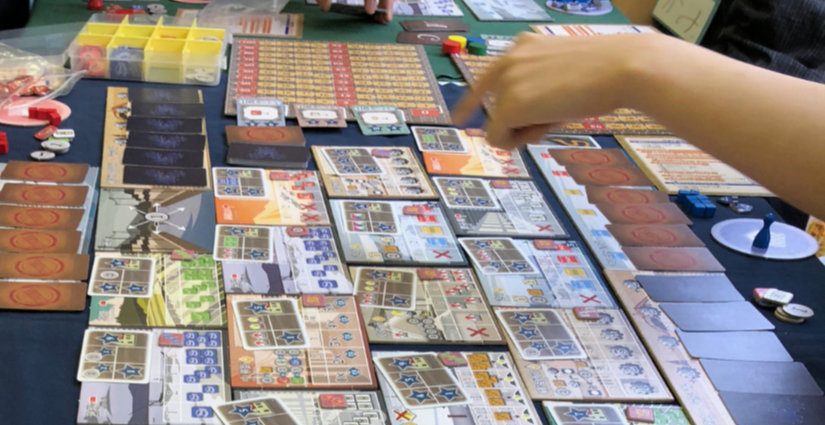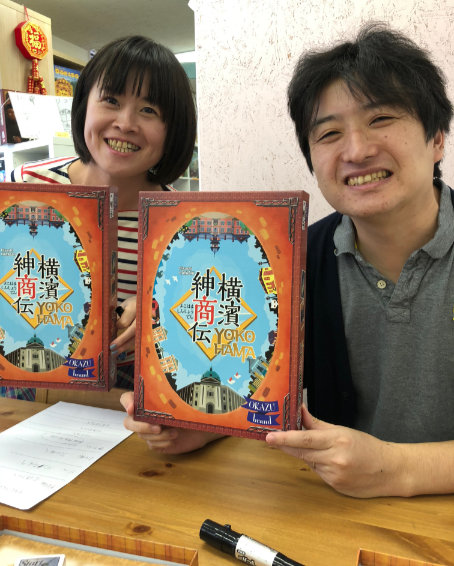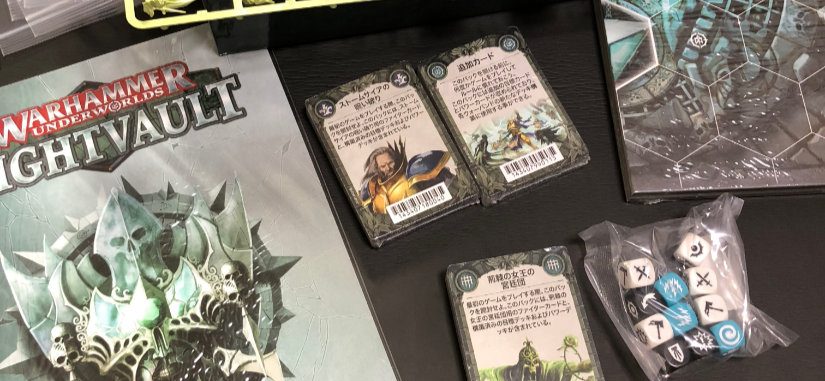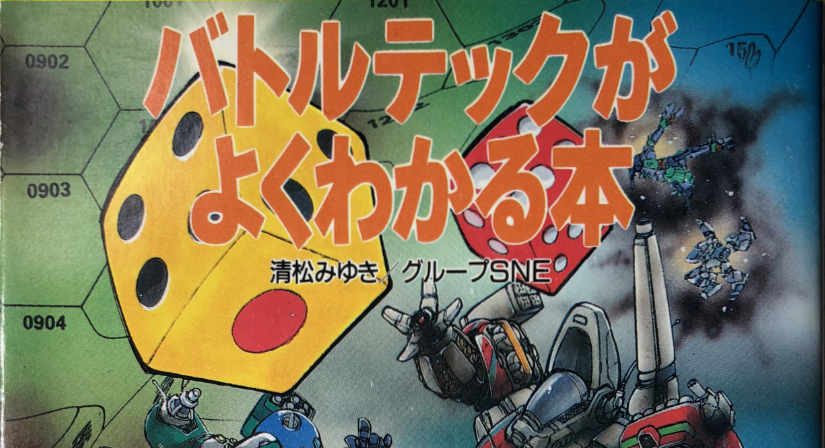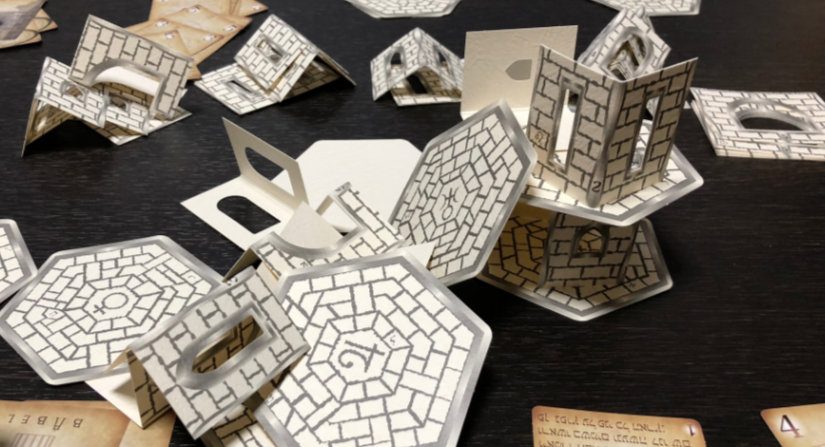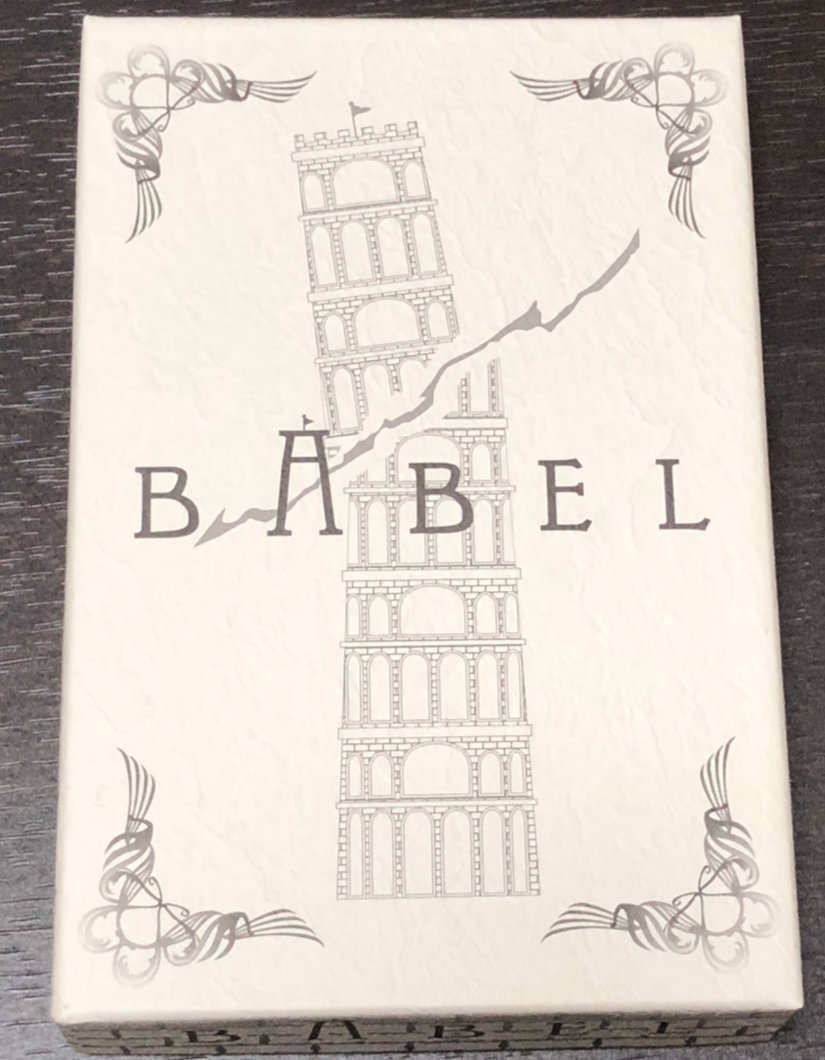A dragon has taken up residence in the mountains near the town of Havinia. Drawn to the region by this threat, the characters have limited time to prepare for battle while hunting the dragon. This is the premise of the cooperative RPGesque board game Dorasure.
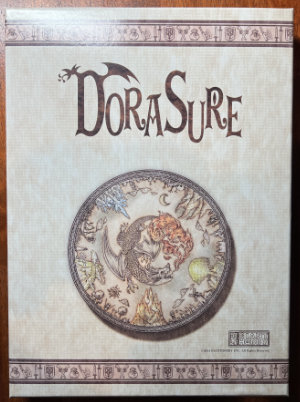
I had been interested in Dorasure since I first saw it, but only recently picked it up at the Fall Tokyo Game Market. Published by the miniature shop Giant Hobby, Dorasure is cooperative board game with simple mechanics that is difficult to beat. The difficulty works in its favor, though, as does the short play time. There are multiple supplements for it, but we’ll just be looking at the base game. Just by chance a local board game cafe had a Dorasure event, so I managed some play time as well. My thoughts based come at the end.
Contents
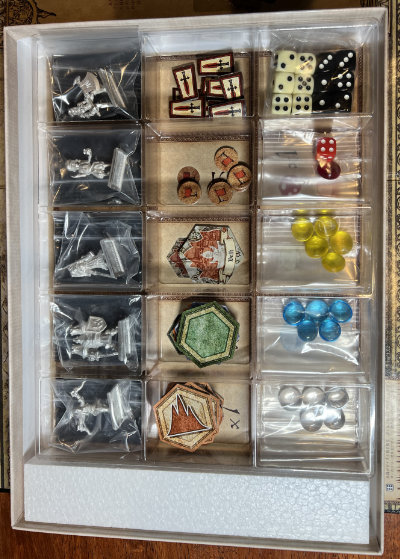
The game board folds in half
and is sturdy. There are five characters, each with a small character sheet and unpainted metal miniature. There is a twelve page manual, note about miniature design changes, and reference sheet. 13 dice, 13 tiles, 9 damage tokens, 5 completion markers, and 15 glass markers round out the box that costs ¥3,973 retail. It seems apropos that Giant Hobby, a miniatures game shop, would produce a game with miniatures. The components are all sturdy.

